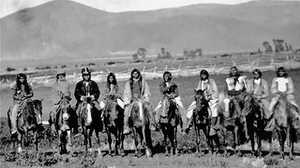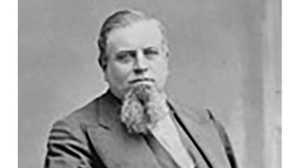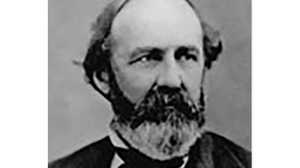Tunneling in the Sierra Nevada

Builders of the transcontinental railroad faced geographical obstacles across the entire line. But none were quite as formidable as the snowy granite mountain range rising east of Sacramento. Getting through the Sierra Nevada would require fortitude, technology -- and the sacrifice of many workers' lives.
The Big Obstacle
In August 1865 early snows defeated the Central Pacific's initial attempt to begin work on Tunnel No. 6, the Summit Tunnel. The grand engineering feat of the Sierra Nevada would have to wait until the following year. Summer 1866 saw construction of the Grizzly Hill and Emigrant Gap Tunnels (Tunnels No. 1 and 2) west of Cisco. As fall approached, Chinese crews were taken off other parts of the line and hurried once more to the summit to get a jump on wintertime. Toil commenced on the Donner granite of Tunnel No. 6 in August 1866, with men blasting inward from what would become the east and west portals of the passage. Progress with black powder through hard rock was excruciatingly slow.
Four-Sided Approach
To speed progress, engineers decided to drill a vertical shaft midway along the projected tunnel line. Tunneling would take place on four faces at a time, as two teams worked inward from the eastern and western ends of the tunnel and two more teams worked back to back from the middle, moving outward.Workers began clearing the 8-by-12-foot shaft on August 27 and made good progress for the first 30 days, at which point the job of hoisting rubble from the shaft via hand derrick became too hard.
New Use for an Old Engine
Engineers found a solution in the abandoned Sacramento, the locomotive that had taken the first pioneering ride on Theodore Judah's Sacramento Valley Railroad. Stripped of all non-essential parts, it was driven to Gold Run, at that point the end of the Central Pacific tracks. Its wheels were removed and its body transferred to a logging truck driven by ten yoke of oxen. In a dangerous and treacherous effort, the freight team hauled what remained of the Sacramento -- a twelve-ton steam engine -- to the top of Donner Pass, where it was let down carefully above Tunnel No. 6 and housed in the large wooden enclosure now surrounding the sunken shaft. The whole process took six weeks.
Massive Work Force
With the shaft completed, two teams of Chinese workers descended to the middle of the rock and began blasting the tunnel from the inside out. The steam engine was employed to cart out their debris. On September 1, work finished on the Emigrant Gap Tunnel (Tunnel No. 2), and those crews were redistributed to the winter quarters and tunnel work waiting upon the summit. That winter the men at Tunnel No. 6 were almost completely Chinese, with a few Caucasians on the west end. Gangs consisted of one white foreman per 30 or 40 workers, with each gang working one of three rotating eight-hour shifts a day. An average of six to ten thousand men worked on the railroad that winter, with as many as 12,000 at one time.
Terrible Snows
A fierce winter in 1866-1867 brought forty-four separate storms. The snow pack averaged eighteen feet at the summit. "No one can face these storms when they are in earnest," Engineer John Gilliss recalled. The heaviest of them began on February 18, 1867 and continued until February 22, when harsh winds kept powder astir in the air until the snow started again days later. The storm continued unabated until March 2. Drifts clogged the entrance to every tunnel, turning many workers into full-time shovelers. CP crews worked, ate, and slept in this inhospitable environment, creating a network of tunnels under the snow to link their camp sites with the work sites. The bad weather held up provisions, diverted workers from railroad-building to snow-management, and created a volatile, freezing world of additional dangers.
Risks to Workers
The railroad lost uncounted men to snow. Avalanches could cut down dozens at a time. "There was one large snowslide at Strong's Canyon known as Camp 4. In this camp were two gangs of Chinese for Tunnels 11 and 12, also a gang of culvert men. The slide took it all, and one of the culvert men was not found until the following spring," wrote Gilliss. Even when the tunnels were done, maintaining them was a monumental task. In the spring of 1868 most of the high-altitude tunnels were completely blocked by ice, which had to be blasted loose and shoveled out. And when snow wasn't killing men, the work was.
"Nitroglycerin Tells"
In total, the Central Pacific engaged 11 tunnel projects (Nos. 3 through 13) in the Sierra that winter. Seven of them clustered in a two-mile stretch east of Donner Summit. Black powder was expensive, and its preparation labor-intensive, requiring men to drill deep two-inch-wide holes by hand in order to clear shallow amounts of rock. But progress increased substantially on all fronts when British chemist James Howden appeared in February 1867. He brought nitroglycerin, which he mixed on location. The compound allowed for shallower holes of narrow width, but its blasts achieved a much greater destructive yield. Nitroglycerin debris was also much easier to move than the debris of black powder, saving a lot of cumulative time and sweat. Workers were able to advance up to two feet per day on all four faces, instead of measuring each hard-won inch.
A Staggering Feat
With its rapidly accelerated pace, the Central Pacific continued work on the Summit Tunnel into the spring and summer of 1867. Workers broke through in August, just one year after the vertical shaft had been drilled. Tunnel No. 6 was a truly staggering feat of engineering. It measured 1,659 feet in length, and reached, at its deepest, 124 feet into the rock. It sat more than 7,000 feet above sea level. Calculations used to position its end points and the central shaft were so accurate that the workers found they were only two inches off when they broke through. And it had been hand-carved, without electricity and without steam-powered tools, except for the single old engine used to hoist debris. The Union Pacific ramped up their track-laying speed and built confidently into Nevada, knowing their hardest task was behind them.







